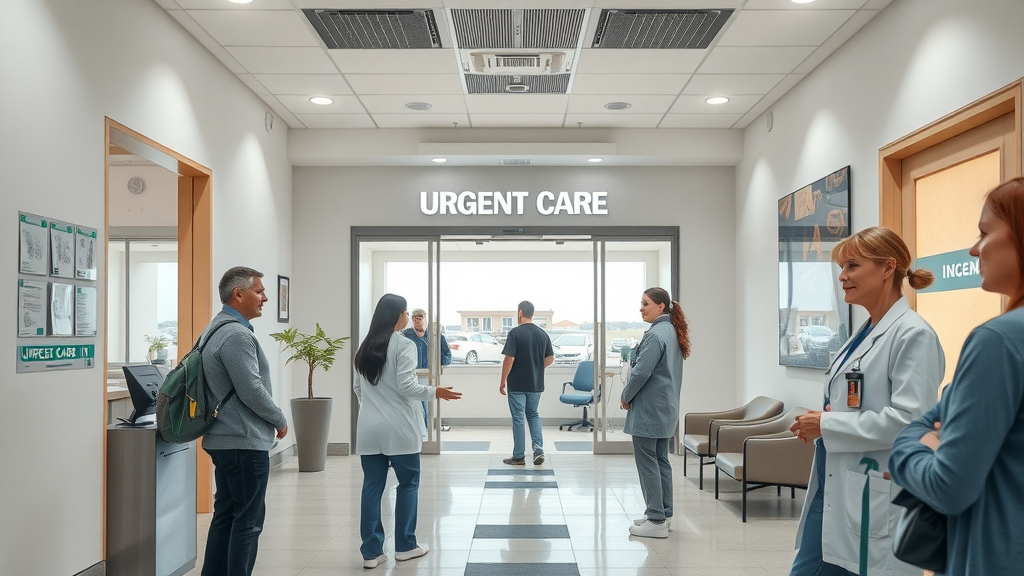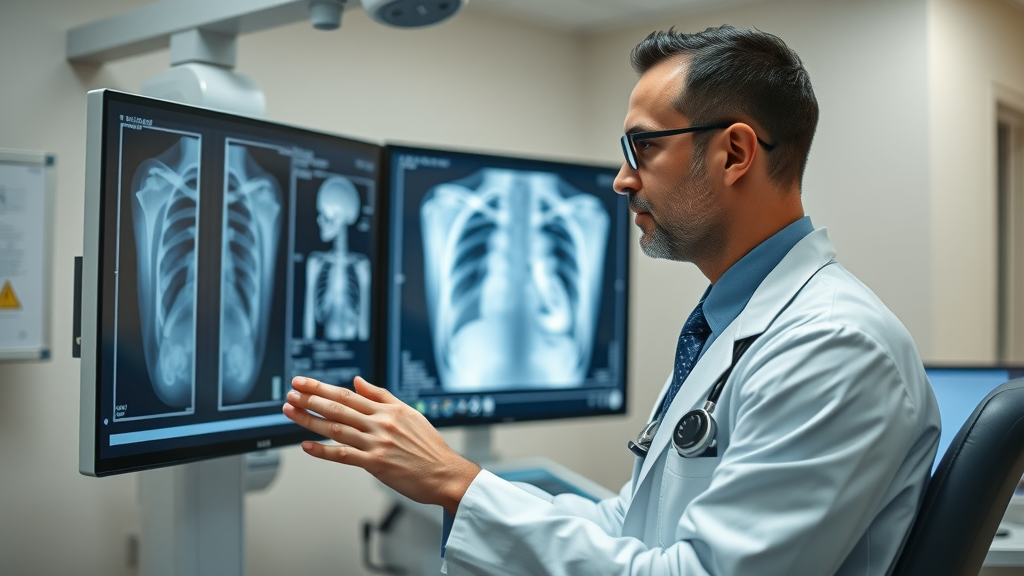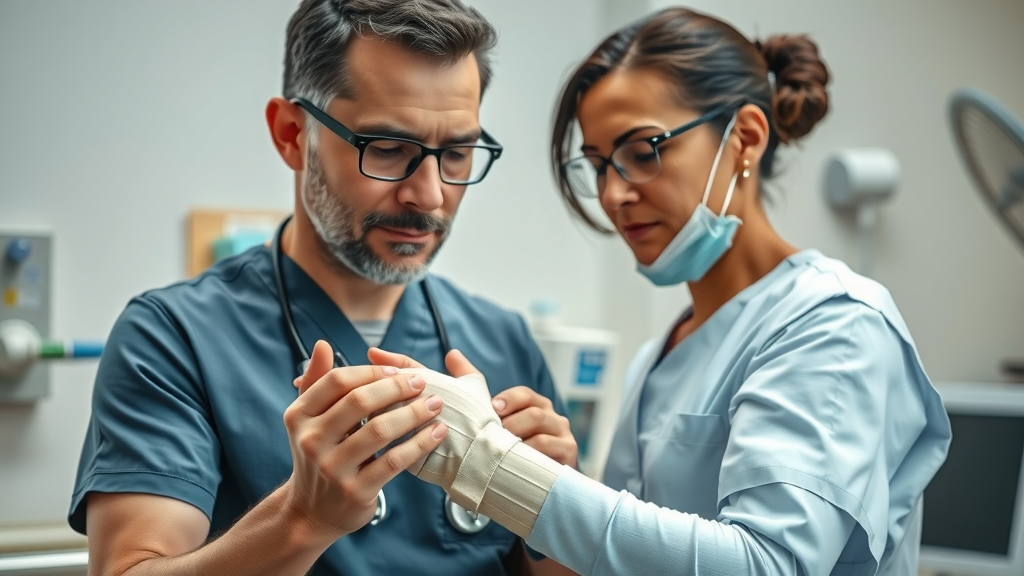Did you know that delayed treatment of orthopedic injuries can lead to prolonged recovery times and increased healthcare costs? Timely and effective acute orthopedic care is critical to ensuring rapid healing and restoring mobility. This article delves into expert strategies for managing urgent orthopedic conditions, emphasizing rapid access, expert device application, and minimally invasive surgical solutions that can transform patient outcomes.
Startling Facts About Acute Orthopedic Care and Urgent Care Needs
Understanding Acute Orthopedic Care and Orthopedic Urgent Care
Acute orthopedic care refers to the prompt medical management of sudden, severe musculoskeletal injuries or conditions that require immediate attention to prevent complications. This includes fractures, dislocations, sprains, and acute soft tissue injuries. Orthopedic urgent care centers specialize in providing focused care for these emergencies, standing as a critical alternative to overwhelmed emergency rooms (ERs).
“Providing compassionate and individualized care is the cornerstone of effective acute orthopedic care,” explains Timothy Larson of Denton Hand & Orthopedics . This compassionate approach ensures that each patient receives tailored treatment plans addressing their unique injury and lifestyle needs.
Rapid Access and Scheduling in Orthopedic Urgent Care Centers
How Orthopedic Urgent Care Reduces Wait Times Compared to Emergency Rooms
One of the major advantages of acute orthopedic care delivered in orthopedic urgent care centers is the significantly reduced wait times compared to traditional ERs. Patients benefit from rapid assessments and interventions, avoiding long delays associated with non-specialized emergency departments. These centers are staffed with specialists who understand musculoskeletal injuries intimately, streamlining diagnosis and treatment.
Furthermore, by focusing solely on orthopedic injuries, urgent care centers enhance patient flow and reduce overcrowding, enabling quicker access to expert care for those in need.
Scheduling an Appointment: Quick and Convenient Care Location Options
Scheduling a visit to an orthopedic urgent care center is designed to be effortless and patient-centered. Multiple convenient locations and flexible scheduling options allow patients to secure rapid appointments, often on the same day or within hours of the injury. This prompt scheduling ensures critical injuries are managed promptly to optimize recovery.
Whether through online portals, phone scheduling, or walk-in options, urgent care centers prioritize accessibility to ensure no patient waits unnecessarily for expert orthopedic evaluation and treatment.

Image: Modern orthopedic urgent care center, welcoming entrance, patients checking in, photorealistic high fidelity lifelike, bright and clean environment, natural lighting, shot with a 35mm lens.
Comprehensive Services Offered in Acute Orthopedic Care
In-Office Imaging: XR and Ultrasound for Immediate Evaluation
Immediate diagnostic imaging is a cornerstone of effective acute orthopedic care . Facilities equipped with in-office X-ray (XR) and ultrasound capabilities can provide rapid visualization of bones, joints, and soft tissues. This capability expedites diagnosis and helps formulate precise treatment plans without delay.
“Having in-office imaging allows us to quickly evaluate conditions and begin targeted treatment the same day,” notes Timothy Larson . This approach minimizes patient inconvenience and accelerates the healing process.

Image: Professional radiologist reviewing x-ray images on a digital screen, thoughtful expression, photorealistic high fidelity lifelike, orthopedic clinic imaging room with modern equipment, soft ambient lighting, highly detailed environment, medium neutral colors, shot with a 50mm lens.
Expert Application of Casts, Braces, and Orthopedic Devices
Efficient and expert application of casts, braces, and other orthopedic devices is essential in immobilizing injuries to facilitate proper healing. At Denton Hand & Orthopedics, highly trained specialists ensure that all devices fit perfectly and provide optimal support, minimizing discomfort and preventing complications.
These devices not only stabilize fractures and soft tissue injuries but also aid in pain management and functional recovery. Precision in application reflects the quality of acute orthopedic care provided.

Image: Orthopedic specialist applying a cast to a patient’s arm, focused expression, photorealistic high fidelity lifelike, clinical setting with medical equipment, soft natural lighting, shot with a 50mm lens.
In-Office Hand Therapy and Conservative Treatment Approaches
Conservative management is often the first line of care in acute orthopedic injuries. This includes hand therapy, rest, analgesics, and physical therapy aiming to restore function without invasive procedures. Timothy Larson of Denton Hand & Orthopedics emphasizes, “Attempting conservative treatment whenever possible ensures patients receive the least invasive care tailored to their needs.”
Hand therapy and other non-surgical interventions promote gradual healing and can often prevent the need for surgery. They are personalized to each patient’s injury severity and recovery goals, reinforcing the holistic approach of modern acute orthopedic care.
Minimally-Invasive Surgical Procedures and Acute Care Solutions
Performing Minor Procedures In-Office to Save Time and Costs
Minimally-invasive surgical procedures conducted in-office represent a significant advancement in acute orthopedic care . These procedures, such as joint injections, minor fracture repairs, or tendon treatments, are performed with precision and sterility, allowing patients to receive effective care without hospital admission.
This approach drastically reduces recovery time, overall costs, and the inconvenience associated with larger surgeries. It also enhances patient comfort and safety by minimizing anesthesia exposure.

Image: Surgeon performing a minimally-invasive orthopedic procedure, precise movements, photorealistic high fidelity lifelike, sterile medical room with advanced tools, focused task lighting, blue and white tones, shot with a macro lens.
Collaboration with Nearby Surgery Centers and Hospitals
For more complex acute orthopedic injuries requiring advanced surgical intervention, collaboration with local surgery centers and hospitals ensures comprehensive care continuity. These partnerships facilitate seamless referrals, coordinated care pathways, and timely surgery scheduling.
Orthopedic urgent care specialists work closely with hospital teams to optimize treatment plans, minimize delays, and improve outcomes. This networked approach exemplifies the multidimensional expertise essential for effective acute orthopedic care.

Image: Medical professionals in discussion at orthopedic surgery center, collaborative mood, photorealistic high fidelity lifelike, hospital conference room with large windows, natural daylight, people interacting over digital tablets, cool tones, shot with an 85mm lens.
Expertise in Managing Orthopedic Emergencies and Acute Injuries
Acute orthopedic emergencies require timely and expert intervention to prevent permanent damage or disability. Conditions such as open fractures, joint dislocations, and compartment syndrome highlight the need for specialist care available in orthopedic urgent care centers. These centers are equipped and staffed by professionals with deep experience in managing complex acute injuries.
This expertise ensures patients receive evidence-based, compassionate, and effective treatment from initial evaluation through rehabilitation.
Why Choose an Orthopedic Urgent Care Center Over Traditional Emergency Rooms?
Reduced Wait Times and Specialized Orthopedic Care
Orthopedic urgent care centers dramatically cut wait times, providing faster access to orthopedic specialists compared to general ERs. Their focused expertise leads to accurate diagnosis and tailored treatment plans, resulting in better patient satisfaction and outcomes for musculoskeletal injuries.
Insurance Coverage and Cost-Effective Treatment Options
Many orthopedic urgent care centers maintain contracts with numerous insurance providers, facilitating easier coverage for acute care treatments. Additionally, the ability to perform many procedures in-office reduces overall treatment costs, making expert care affordable and accessible without compromising quality.
People Also Ask: Common Questions About Acute Orthopedic Care
What is acute orthopedics?
Acute orthopedics is the branch of medicine focused on the immediate evaluation and treatment of sudden musculoskeletal injuries, such as fractures, sprains, or dislocations, aiming to restore functionality and prevent long-term complications.
What is the meaning of orthopedic urgent care?
Orthopedic urgent care refers to specialized medical services that provide rapid and targeted treatment for urgent orthopedic injuries, offering an alternative to general emergency rooms with faster, expert care.
When to go to orthopedic urgent care?
If you experience sudden joint pain, fractures, dislocations, or severe soft tissue injuries, visiting an orthopedic urgent care center promptly can provide immediate expert evaluation and treatment.
What are the three true orthopedic emergencies?
- Open fractures with exposed bone
- Compartment syndrome causing tissue pressure increase
- Severe joint dislocations threatening blood flow or nerve function
Key Takeaways: Expert Recommendations for Acute Orthopedic Care
| Aspect | In-Office Acute Orthopedic Care | Emergency Room |
|---|---|---|
| Wait Time | Less than 1 hour typical | Several hours common |
| Specialist Access | On-site orthopedic specialists | General emergency physicians |
| Imaging | In-office XR & Ultrasound | XR and CT scan with possible delays |
| Procedures | Minor surgeries in-office; major at partnering centers | Limited on-site orthopedic surgeries |
| Cost | Generally lower, insurance accepted | Higher due to facility fees & ER charges |
Conclusion: Ready to Feel Better? Schedule Your Consultation Today
Expert acute orthopedic care transforms how patients recover from sudden musculoskeletal injuries by combining rapid access, expert device application, and minimally invasive surgical solutions. “Our goal is to provide rapid, expert care that gets patients back to their lives quickly and safely,” states Timothy Larson of Denton Hand & Orthopedics . For compassionate, individualized care designed around your needs, consider scheduling your consultation today.
- Compassionate, individualized care
- Rapid access to orthopedic specialists
- In-office imaging and therapy
- Minimally-invasive procedures
- Cost-effective treatment options
Schedule Your Consultation at www.dentonhand.com
For a comprehensive understanding of acute orthopedic care, consider exploring the following resources:
-
Orthopaedic Acute Injury Program at Stanford Health Care offers specialized evaluation and treatment for non-life-threatening orthopedic injuries, ensuring rapid diagnosis and effective treatment plans.
-
Orthopedic Urgent Care at St. Peter’s Health provides immediate, walk-in access to orthopedic-trained providers for acute joint, bone, and muscle injuries, facilitating prompt assessment and treatment.
These resources offer valuable insights into the importance of timely and specialized care for acute orthopedic conditions, highlighting the benefits of rapid access to expert treatment.
 Add Row
Add Row  Add
Add 




Write A Comment